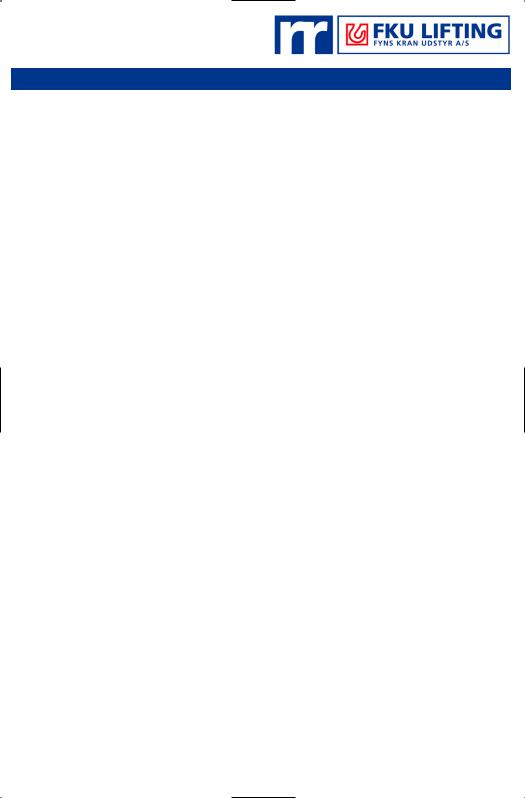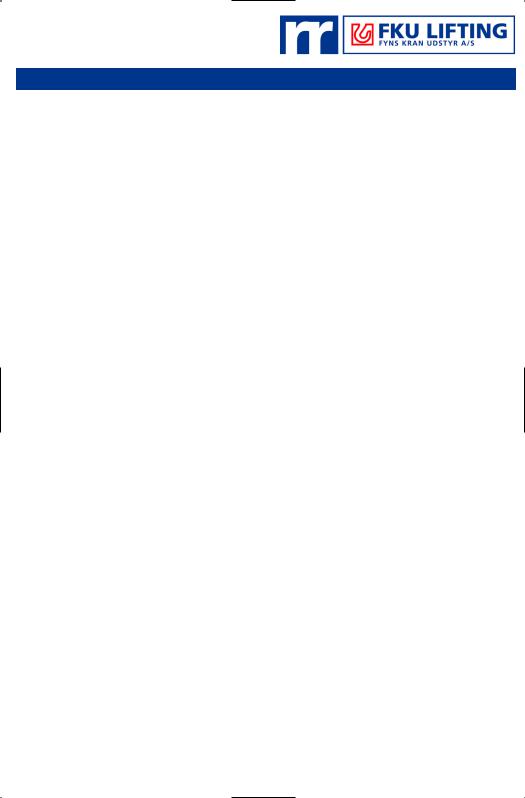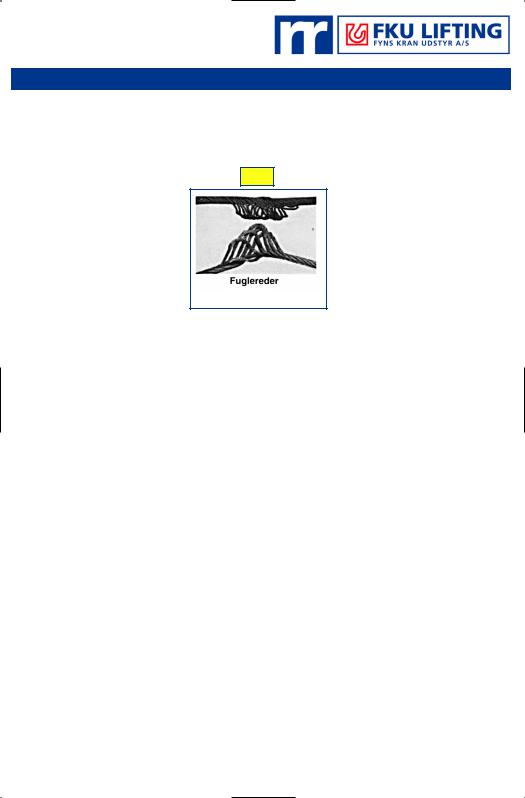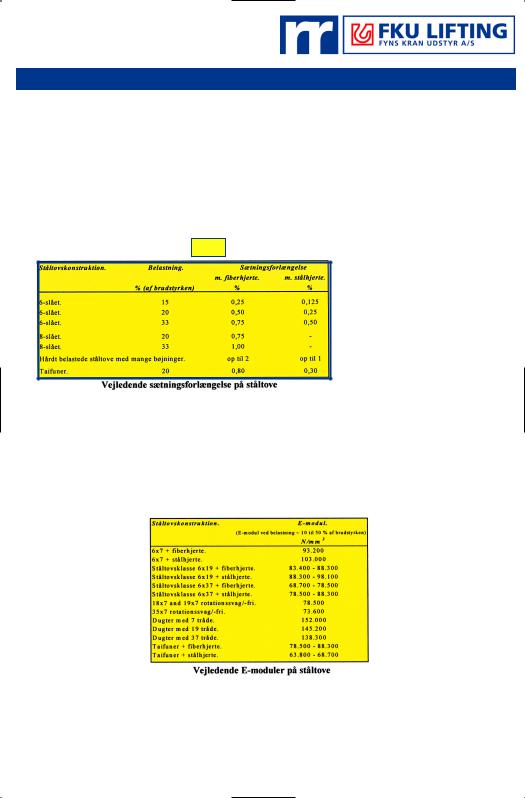
- •Introduction to the Anchor Handling Course
- •Technical Specifications:
- •Winch Layout:
- •Power Settings / Bollard Pull
- •All operations on board must be performed in accordance with Company Procedures.
- •Risk Assessment
- •Planning
- •Planning:
- •Goal, example:
- •What to do:
- •Electrical winches
- •Winch operation
- •General Arrangement
- •A/H-Drum at full Capacity
- •Over speed
- •Water brake
- •Band brake
- •QUICK & Full Release
- •Hydraulic Winches
- •Lay out (B-type)
- •Hydraulic winch, “B-type”
- •TOWCON
- •Instruction for use of Wire Drums
- •Changing of Chain Wheels (Wildcats / Chain Lifter)
- •TRIPLEX - SHARK JAW SYSTEM.
- •Operation
- •Maintenance and inspections
- •Safety
- •2. OPERATION:
- •QUICK RELEASE:
- •EMERGENCY RELEASE:
- •CONTROL PANEL
- •Marks for Locked on Hinge Link
- •2.2- OPERATION OF THE "JAW IN POSITION ACCEPT" LEVER:
- •2.3 OPERATION OF THE CONTROL PANEL AT EMERGENCY POWER.
- •3. ELECTRIC AND HYDRAULIC POWER SYSTEM.
- •3. 1. ARRANGEMENT OF SYSTEM.
- •3.2. FUNCTIONING OF QUICK RELEASE - JAWS ONLY.
- •3.3. FUNCTIONING OF EMERGENCY RELEASE
- •4.2 Test without Load.
- •4.3 Test with Load.
- •5. General Maintenance
- •5.1 Accumulators Depressurising
- •5.2 Shark Jaw Unit
- •5.3 Guide Pins Units
- •5.4 Hydraulic System
- •5.5 Electric System
- •6. Control Measurements / Adjustments.
- •6.2 Adjustment of inductive proximity switches on lock cylinders.
- •6.3 Adjustment of Pressure Switches for Lock Pressure.
- •7. Test Program – Periodical Control
- •7.2 Checking List – Periodic Control Mechanical / Hydraulic.
- •7.3 Checking List – Periodic Control Electrical
- •7.4 Testing without Load – Yearly Testing.
- •7.5 Load Test – Emergency Release – 5 Year Control.
- •“Mark on line !”
- •“Double set of Jaws, Pins and Wire lifter”
- •View from the bridge.
- •“JAW READY FOR OPERATION”
- •“JAW LOCK POSITION ACCEPTED”
- •KARM FORK – SHARK JAW SYSTEM.
- •Wire and chain Stopper
- •Inserts for KARM FORK
- •Martensite:
- •Recommendations:
- •1. THE BASIC ELEMENTS OF STEEL WIRE ROPE
- •2. STEEL WIRE ROPE CONSTRUCTIONS
- •3. SPECIAL STEEL WIRE ROPES
- •4. USE OF STEEL WIRE ROPE
- •5. SELECTING THE RIGHT STEEL WIRE ROPE
- •6. ORDERING STEEL WIRE ROPE
- •7. STEEL WIRE ROPE TOLERANCES
- •8. HANDLING, INSPECTION AND INSTALLATION
- •9. INSPECTION AND MAINTENANCE
- •10. ELONGATION AND PRE-STRETCHING
- •11. OPERATING TEMPERATURES
- •12. MARTENSITE FORMATION
- •13. END TERMINATIONS
- •14. SOCKETING (WIRELOCK)
- •15. DRUM CAPACITY
- •16. CLASSIFICATION AND USE OF STEEL WIRE ROPE
- •17. ROPES
- •18. CHAINS AND LIFTING COMPONENTS
- •19. TECHNICAL CONVERSION TABLES
- •SWIVEL
- •MoorLink Swivel
- •Pin Extractor
- •Socket Bench
- •Chains and Fittings
- •STUD LINK MOORING CHAIN
- •OPEN LINK MOORING CHAIN
- •KENTER JOINING LINKS
- •PEAR SHAPE ANCHOR CONNECTING LINK
- •DETACHABLE CONNECTING LINK
- •D’ TYPE JOINING SHACKLES
- •‘D’ TYPE ANCHOR SHACKLES
- •SHACKLES
- •JAW & JAW SWIVELS
- •BOW & EYE SWIVELS
- •MOORING RINGS
- •FISH PLATES
- •PELICAN HOOKS
- •SLIP HOOKS
- •‘J’ CHASERS
- •PERMANENT CHASERS
- •DETACHABLE PERMANENT CHAIN CHASERS
- •PERMANENT WIRE CHASERS
- •‘J’ LOCK CHAIN CHASERS
- •The way to break the anchor loose of the bottom is therefore:
- •Table of contents
- •Introduction
- •General
- •Mooring systems
- •Mooring components
- •History of drag embedment anchors
- •Characteristics of anchor types
- •History of vryhof anchor designs
- •Criteria for anchor holding capacity
- •Theory
- •Criteria for good anchor design
- •Aspects of soil mechanics in anchor design
- •Soil classification
- •Fluke/shank angle
- •Fluke area
- •Strength of an anchor design
- •Anchor loads and safety factors
- •Anchor behaviour in the soil
- •Proof loads for high holding power anchors
- •Anchor tests
- •Soil table
- •Practice
- •Introduction
- •Soil survey
- •Pile or anchor
- •Setting the fluke/shank angle
- •Connecting a swivel to the Stevpris anchor
- •Chasers
- •Chaser types
- •Stevpris installation
- •Laying anchors
- •Retrieving anchors
- •Anchor orientation
- •Decking the Stevpris anchor
- •What not to do!
- •Racking the Stevpris
- •Deploying Stevpris from the anchor rack
- •Boarding the anchor in deep water
- •Ballast In fluke
- •Chaser equilibrium
- •Deployment for permanent moorings
- •Piggy-backing
- •Piggy-back methods
- •Stevmanta VLA installation
- •Installation procedure
- •Stevmanta retrieval
- •Double line installation procedure
- •Stevmanta retrieval
- •Double line installation with Stevtensioner
- •The Stevtensioner
- •The working principle of the tensioner
- •Measurement of the tensions applied
- •Umbilical cable and measuring pin
- •Break - link
- •Duration of pretensioning anchors and piles
- •Handling the Stevtensioner
- •General tensioning procedures
- •Hook-up
- •Lowering
- •Tensioning mode
- •Retrieving
- •Supply vessels/anchor handling vessels
- •Product data
- •Introduction
- •Dimensions of vryhof anchor types
- •Proof load test for HHP anchors (US units)
- •Dimensions of vryhof tensioners
- •Proof load/break load of chains (in US units)
- •Chain components and forerunners
- •Connecting links
- •Conversion table
- •Mooring line catenary
- •Mooring line holding capacity
- •Shackles
- •Wire Rope
- •Wire rope sockets
- •Thimbles
- •Synthetic ropes
- •Mooring hawsers
- •Main dimensions chasers
- •Stevin Mk3 UHC chart
- •Stevin Mk3 drag and penetration chart
- •Stevpris Mk5 UHC chart
- •Stevpris Mk5 drag and penetration chart
- •Stevmanta VLA UPC chart
- •Introduction
- •Propulsion system
- •Propellers
- •Thrusters
- •Rudders
- •Manoeuvring
- •Current
- •Wind
- •Other forces
- •Turning point (Pivot point)
- •Ship handling
- •General layout Jack-Up drilling unit:
- •General information about a Semi Submersible drilling unit:

TEKNISK INFORMATION |
10-23 |
Indkøring af ståltovet
Efter montering af ståltovet anbefaler Randers Reb, at ståltovet køres gennem anlægget flere gange under lav hastighed og moderat belastning (f.eks. 5% af brudstyrken). Herved tilpasser ståltovet sig gradvist de nye forhold. Dugterne sætter sig, ståltovet forlænger sig. Desuden formindskes diameteren lidt, da dugterne og hjertet presses sammen. Ståltovet vil således være mindre udsat for skader, når maksimal belastning anvendes. Den tid, der benyttes til indkøringen af ståltovet, bliver tjent ind igen mange gange, idet ståltovet får længere levetid.
Vedligeholdelse af føringsudstyr
Ordentlig vedligeholdelse af udstyret, som ståltovet har kontakt med, har stor betydning for ståltovets levetid. Slidte skivespor, styreruller mm., skæve skiver og fastsiddende lejer resulterer bl.a. i chokbelastning og vibrationer i ståltovet, hvilket har en ødelæggende effekt på ståltovet med unormalt slid og udmattelse til følge.
Udstyr, som ståltovet har kontakt med, skal inspiceres regelmæssigt. Hvis udstyret ikke er i orden, skal det omgående udskiftes evt. repareres. Ved reparation af føringsudstyret ved svejsning skal man sørge for, at hårdheden på svejsematerialet er ca. 300 Brinel, således at man får sliddet på føringsudstyret i stedet for på ståltovet (se også afsnittet "Kontrol af føringsudstyr").
9. KONTROL OG VEDLIGEHOLDELSE
Vedligeholdelse af ståltovet
Den olie/fedt, som ståltovet tilføres under fremstillingen, beskytter kun ståltovet under opbevaringen og den første tids brug. Ståltovet skal derfor eftersmøres regelmæssigt.
Ordentlig eftersmøring er meget vigtig for ståltovet levetid, idet smøringen har til formål dels at beskytte ståltovet mod rust, dels at reducere friktionen mellem trådene og dugterne i ståltovet. Desuden nedsættes friktionen mellem ståltovet og de flader, som ståltovet berører.
Smøremidlet, der skal anvendes til eftersmøringen, skal være fri for syrer og må ikke have skadelig indvirkning på hverken ståltråde og/eller fiberhjertet samt miljø. Smøremidlet skal have en konsistens som gør, at smøremidlet trænger ind i hjertet og dugten. Ståltovet skal rengøres før eftersmøringen.
For opnåelse af maksimal eftersmøring skal smøremidlet påføres under kørsel og ved en skive eller på tromlen, idet ståltovet her vil åbne sig. Smøremidlet kan herved lettere trænge ind.
Randers Reb har udviklet en speciel eftersmøringsolie - Randers WIRE OLIE type 01der tilfredsstiller de specielle krav, der stilles til eftersmøring af ståltove. Olien har en god indtrængningsog smøreevne. Desuden er olien vandfortrængende og tilsat additiver, der er rustopløsende og stopper yderligere rustdannelse under lagring og brug.
Running in Steel Wire Rope
After the steel wire rope has been installed, Randers Reb recommends that it is run through the system several times at low speed and moderate loading (e.g. 5% of tensile strength). In this way the steel wire rope will gradually become accustomed to the new conditions. The strands will settle, the steel wire rope will lengthen and the diameter will decrease a little due to the fact that the strands and the core are compressed. The steel wire rope will thus be less susceptible to damage when maximum load is applied. The time spent "run- ning-in" the steel wire rope will be earned many time over, as the steel wire rope will thus have a longer life expectancy.
Maintenance of Guidance Equipment
Thorough maintenance of the equipment that the steel wire rope will come into contact with is of great significance for the steel wire rope- 's life expectancy. Worn sheaf grooves, guide rolls, etc., crooked sheaves and jammed bearings all result in such effects as shock load and vibrations in the steel wire rope, which have a destructive effect on the steel wire rope, resulting in exaggerated wear and tear and fatigue.
Equipment that the steel wire rope comes into contact with must be inspected regularly. If there is a problem with the equipment, it must be replaced or repaired immediately. If the guidance equipment is repaired by welding, care should be taken to ensure that hardness of the welding material is approx. 300 Brinel, so that it is the sheaf that is worn, and not the steel wire rope (see also section 6: "Inspection of Guidance Equipment").
9. INSPECTION AND MAINTENANCE
Maintenance of Steel Wire Rope
The oil/grease that is added to the steel wire rope during production is only sufficient to protect the steel wire rope during the storage period and initial use. The steel wire rope must be lubricated regularly.
Thorough lubrication is extremely important for the steel wire rope's life expectancy, as the purpose of lubrication is partly to protect the steel wire rope against rust, and partly to reduce friction between the wires and the strands in the steel wire rope. Friction is also thereby reduced between the steel wire rope and the surfaces with which it comes into contact.
The lubricant used must be free of acids and must not have a destructive effect on the steel wires, the fibre core and the environment. The lubricant must have a consistency that enables it to penetrate the core and the strands. The steel wire rope must be cleaned before lubrication.
To achieve maximum lubrication effect, the lubricant should be applied during operation, at a sheaf or on the drum, as this is where the steel wire rope opens up and makes it easier for the lubricant to penetrate.
FKU LIFTING A/S |
Randers |
Odense |
København |
10 |
|
89 11 12 89 |
63 96 53 00 |
43 73 35 66 |
Jan 2002

TEKNISK INFORMATION |
10-24 |
Olien kan let påføres med pensel.
Se også vort Produktinformation's blad "Smøring og vedligeholdelse af ståltove".
Kontrol af ståltovet
Følgende er en vejledning på mulige kontrolpunkter i forbindelse med inspektion/kontrol af et ståltov - ikke en komplet manual eller erstatning for krav angivet i tilhørende normer og standarder.
Slid
Ståltovet skal udskiftes,, når den nominelle diameter er reduceret med 10%.
Forlængelse
Alle ståltove forlænger sig ved belastning (se også afsnittet "Ståltovsforlængelse"). Ståltovets forlængelse over levetiden kan opdeles i tre faser.
·Fase 1: Under den første tids brug forlænger det nye ståltov sig helt naturligt. Dels p.g.a. belastningen, dels p.g.a. at ståltovet sætter sig.
·Fase 2: Når ståltovet har sat sig. Under det meste af sin levetid for længer ståltovet sig ikke ret meget. Forlængelsen under denne fase skyldes primært slid.
·Fase 3: Under denne fase nedbrydes ståltovet hurtigt og forlænger sig uden yderligere påvirkning, hvilket bl.a. skyldes fremskredent slid. Ståltovet skal udskiftes omgående.
Reduktion af dimensionen
Enhver mærkbar reduktion af ståltovsdimensionen i forhold til den oprindelige dimension indikerer nedbrydelse af ståltovet. Reduktionen kan bl.a. skyldes:
·Udvendigt/indvendigt slid.
·Sammenklemning af dugt og/eller hjerte.
·Udvendig/indvendig rustdannelse.
·Forlængelse.
Rust
Rust er mindst lige så vigtig en faktor som slid i forbindelse med vurderingen af ståltovets stand. Rust stammer normalt fra dårlig vedligeholdelse af ståltovet og bevirker hurtigere udmattelse af trådene (skørhed/revnedannelse).
Kinker
Kinker forårsager permanent ødelæggelse af ståltovet. Kinker dannes pga. udtrækning af løkker.
Ståltovet skal udskiftes omgående.
Randers Reb has developed a special lubricating oil, Randers WIRE OIL Type 01, which satisfies the special requirements for lubrication of steel wire ropes. The oil has excellent penetrative and lubrication qualities. It is also water-resistant and contains additives that dissolve rust and prevent further formation of rust during storage and operation. The oil is easily applied with a brush.
See also our Product Information leaflet, "Lubrication and Maintenance of Steel Wire Ropes".
Inspection of Steel Wire Rope
The following guidelines cover possible points that should be checked in conjunction with the inspection of steel wire rope. This is not a complete manual, nor is it an alternative to the relevant norms and standards.
Wear and Tear
As a rule, a steel wire rope should be replaced when the outer wires are worn down to 1/3 of the original wire dimension.
Elongation
All steel wire ropes become elongated when loaded (see also section 9: "Steel Wire Rope Elongation"). The elongation of a steel wire rope during its lifetime can be divided into three phases:
-Phase 1: The new steel wire rope becomes longer quite naturally during its initial period of use. This partly because of the loading, and partly because the steel wire rope settles.
-Phase 2: When the steel wire rope has settled and for most of its lifetime, the steel wire rope does not become much longer.Elongation during this phase is mainly due to wear.
-Phase 3: The steel wire rope suddenly becomes longer very quickly. This means that the steel wire rope is deteriorating rapidly due to such causes as advanced wear and fatigue. The steel wire rope must be replaced immediately.
Reduction of Dimensions
Every noticeable reduction of the steel wire rope's dimensions in comparison with its original dimensions indicates a deterioration in the steel wire rope. The reduction may be due to such causes as:
-External/internal wear and tear.
-Compression of strands and/or core.
-External/internal formation of rust.
-Elongation.
Rust
Rust is just as important a factor as wear and tear in terms of evaluating the steel wire rope's condition. Rust is normally caused by poor maintenance of the steel wire rope and promotes quicker fatigue in the wires (fragility/creation of cracks).
Kinks
Kinks cause permanent damage to the steel wire rope. Kinks are formed due to extraction of loops.
The steel wire rope must be replaced immediately.
FKU LIFTING A/S |
Randers |
Odense |
København |
10 |
|
89 11 12 89 |
63 96 53 00 |
43 73 35 66 |
Jan 2002

TEKNISK INFORMATION |
10-25 |
Fuglerede
En fuglerede (dugterne rejser sig samme sted) opstår bl.a., hvis ståltovet f.eks. er tilført torsion (drejet op), oplever pludselig aflastning, køres gennem for små skivespor og/eller spoles op på for lille tromle (fig. 44).
Bird's Nest
A "bird's nest" (the strands rising in the same place) is created by such actions as the steel wire rope being subjected to torsion (rotated), sudden unloading, running through sheaf grooves that are too small and/or winding on a drum that is too small.
Ståltovet skal udskiftes omgående.
Lokalt slid/ødelæggelse
Lokalt slid på ståltovet skyldes som oftest dårlig spoling. Alle fittings og splejsninger skal undersøges for slid eller trådbrud, løse eller knækkede dugter, slid eller revner på/i fittings mm.
Brandskader
Efter brand eller påvirkning af høje temperaturer kan der opstå metalskader, tab af olie/fedt og ødelæggelse af ståleller fiberhjerte mm.
Fig. 44
Bird's nests
The steel wire rope must be replaced immediately.
Local Wear and Tear/Damage
Local wear and tear is most often caused by poor winding. All fittings and splicings must also be inspected for wear or broken wires, loose or split strands, wear or cracks in fittings, etc.
Fire Damage
After a fire or exposure to high temperatures, metal damage, loss of oil/grease and destruction of fibre core, etc., may occur.
Ståltovet skal udskiftes omgående.
Hjertet kommer ud mellem dugterne
Uafhængigt af årsagen til at hjertet kommer ud mellem dugterne, skal ståltovet udskiftes omgående.
Trådbrud
Trådbrud kan opstå af mange forskellige årsager. Nogle alvorlige, andre ubetydelige.
Hvis trådbruddene er alvorlige, skal ståltovet udskiftes omgående.
Hvis du er i tvivl om, hvorvidt ståltovet skal kasseres eller ej, så kontakt din konsulent eller vores tekniske afdeling hurtigst muligt.
10. FORLÆNGELSE OG FORSTRÆKNING
Ståltovsforlængelser
Når et ståltov belastes, forlænger det sig. Forlængelsen består af to typer forlængelser - sætningsforlængelse (blivende) og elastisk forlængelse. Forlængelse p.g.a. overbelastning (f.eks. flydning) eller opdrejning vil ikke blive omtalt.
Sætningsforlængelse
Når et nyt ståltov belastes, bliver dugter og hjerte mindre (komprimeres). Desuden klemmer dugterne hårdere på hjertet - konstruktionen sætter sig. Dette medfører, at ståltovsdimensionen bliver lidt mindre, hvorved ståltovet forlænger sig. Denne forlængelse kaldes sætningsforlængelse og vedbliver, indtil ståltovet flere gange har været belastet ved normal drift. Hvis ståltovet på et senere tidspunkt belastes med en større kraft end under normal drift, vil ståltovet sandsynligvis forlænge sig yderligere.
The steel wire rope must be replaced immediately.
Core Protruding between the Strands
Regardless of the cause of the core protruding between the strands, the steel wire rope must be replaced immediately.
Wire Fracture
A wire fracture may result from many different causes, some serious, others insignificant.
If the wire fractures are serious, the steel wire rope must be replaced immediately.
If you are in any doubt as to whether the steel wire rope should be scrapped or not, please contact your local salesman or our Technical Department as soon as possible.
10. ELONGATION AND PRE-STRETCHING
Steel Wire Rope Elongation
When a steel wire rope is loaded it becomes longer. This elongation consists of two types of elongation - construction elongation (permanent) and elastic elongation. Elongation due to overloading (yielding) or due to rotation are not dealt with here.
Constructional Elongation
When a new steel wire rope is subjected to a load, the strands and the core decrease in size (are compacted). In addition, the strands are squeezing more tightly around the core. The construction settles. This means that the steel wire rope's dimension becomes slightly smaller, causing the steel wire rope to become longer. This elongation is known as constructional elongation and remains in place until the steel wire rope has been subjected to loads several times in normal operation. If the steel wire rope is at a later date subjected to a
FKU LIFTING A/S |
Randers |
Odense |
København |
10 |
|
89 11 12 89 |
63 96 53 00 |
43 73 35 66 |
Jan 2002

TEKNISK INFORMATION |
10-26 |
Sætningsforlængelse er afhængig af:
·Hjertetype.
·Ståltovskonstruktionen.
·Slåstigningen.
·Materialet.
·Belastningen.
Ståltove med stålhjerte har mindre sætningsforlængelse end ståltove med fiberhjerte. Da ståltoves sætningsforlængelse er afhængig af flere faktorer, kan en entydig sætningsforlængelse ikke angives. Tabel 4 er vejledende:
greater force than that experienced under normal operating conditions, the steel wire rope will probably become a little longer.
Constructional elongation is dependent on:
·Type of core
·Steel wire rope construction
·Elevation (the length a strand passes to wrap once around the core)
·Material
·Load
Steel wire ropes with steel cores have less constructional elongation than steel wire ropes with fibre cores.
Since the construction elongation of steel wire ropes is dependent on a number of factors, it is not possible to give a clear definition of construction elongation. Table 4 is intended to provide guidelines.
Guidelines for constructional elongation in steel wire ropes
Elastisk forlængelse (E-modul). |
Elastic Elongation (Modulus of elasticity) |
|||
Elastisk forlængelse er ikke kun afhængig af belastningen, men også |
Elastic elongation is not only dependent on the load on the steel |
|||
af konstruktionen, hvorfor ståltove ikke følger Young's E-modul. Tabel |
wires, but also on the construction, which is why steel wire ropes do |
|||
5 angiver forskellige ståltovskonstruktioners E-modul. Tabellen er |
not follow Young's modulus. It is therefore not possible to produce an |
|||
vejledende. |
unequivocal Modulus of elasticity for steel wire ropes. Table 5 is |
|||
|
|
|
intended as a guide only. |
|
|
|
|
|
|
|
|
Tabel 5 |
|
|
|
|
|
|
|
|
|
|
|
|
Guidelines for Modulus of elasticity on steel wire ropes
FKU LIFTING A/S |
Randers |
Odense |
København |
10 |
|
89 11 12 89 |
63 96 53 00 |
43 73 35 66 |
Jan 2002
